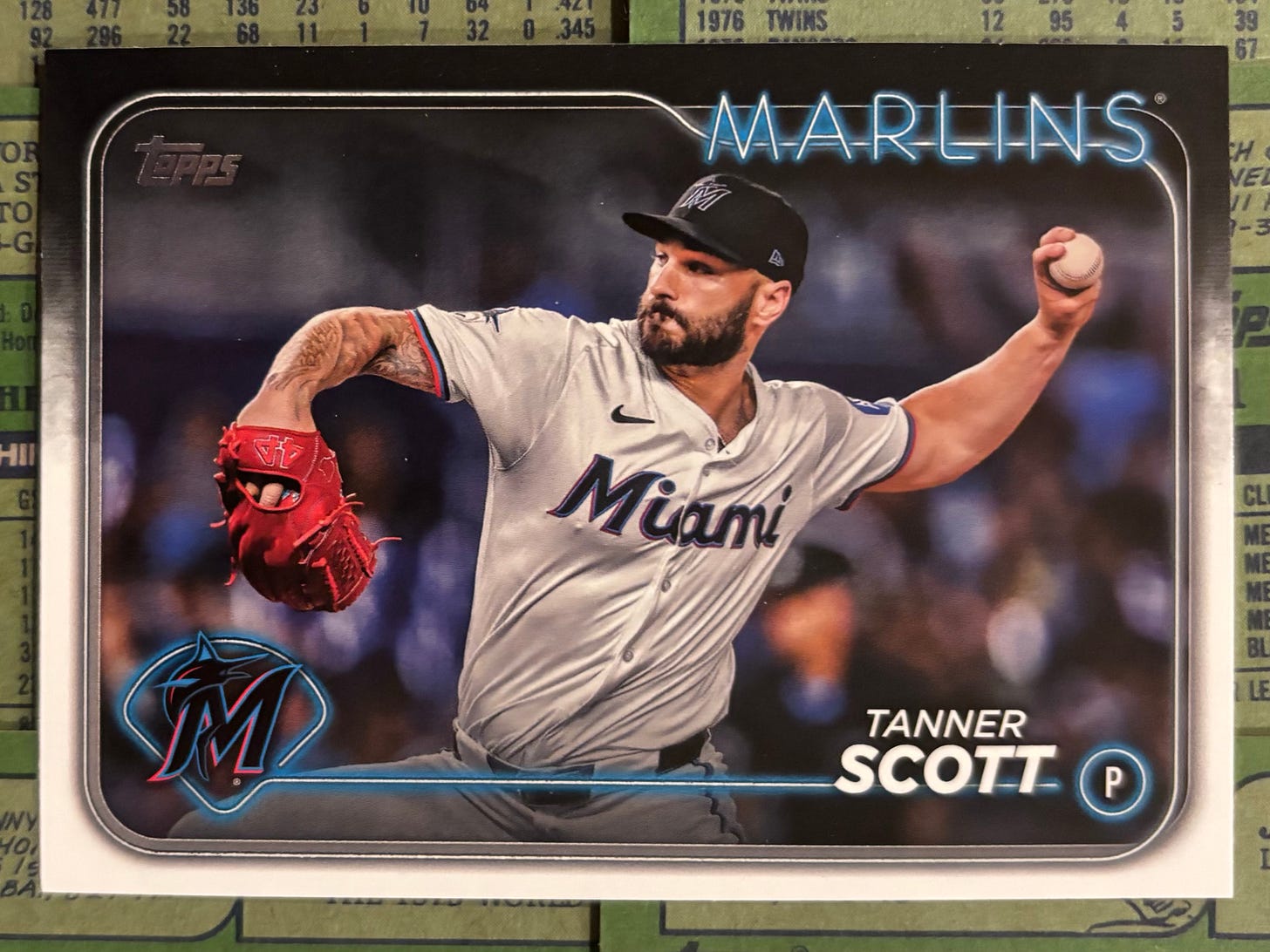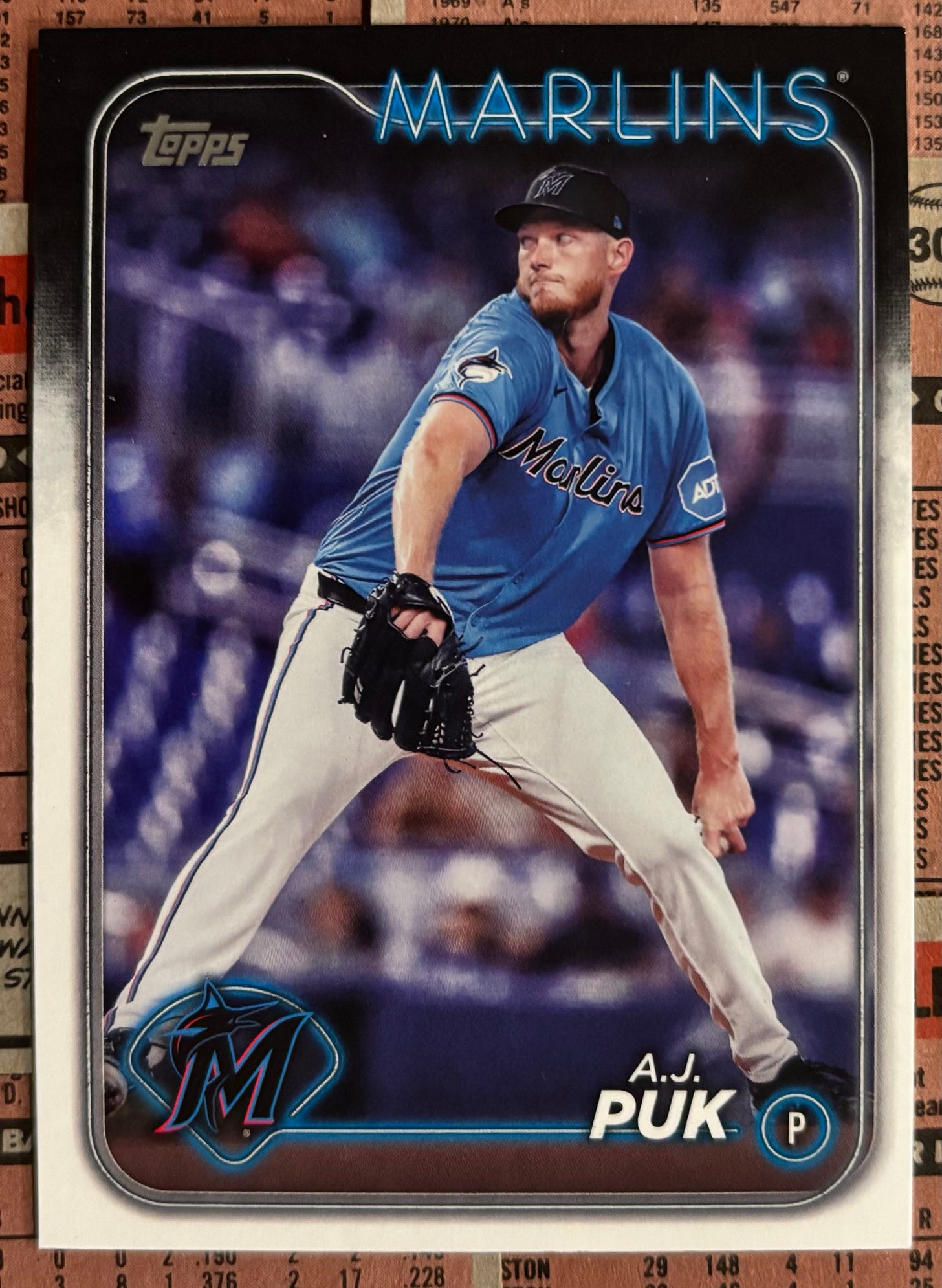He was just doing his job. He happened to do it very well at the most important time. So after striking out Shohei Ohtani in each of their four postseason showdowns, people took notice.
It got the Dodgers attention to the tune of $72 million over four years. That’s a lot of money for a reliever who may not handle the ninth inning and only recently began to overcome a history of walking too many batters.
Los Angeles assured itself of one thing, though: Outside of perhaps an intrasquad game on a back field next month, Tanner Scott won’t strike out Ohtani this year.
With the Scott signing, the Dodgers inch closer towards baseball hegemony. An organization highly regarded among peers for elite scouting, player development, and analytics has just bought itself out of a problem.
The Dodgers are both the brilliant child who posted a perfect score on the SAT and has straight A’s — except for that one A-minus in jazz band — and the wealthy parents who make that A-minus disappear with a lead gift for a new Ivy League library. (“Yale could use an international airport.”)
The Dodgers have acquired Ohtani’s October nemesis. Why let Shohei work through his struggles when you can buy him out of them? Baseball is a game of adjustments. LA adjusted the opponent.
Good Scott
Tanner Scott is a former sixth-round selection of the Orioles in 2014 whose consistently high walk rates would have appealed only to a team actively trying to lose as many games as possible. Some guys have all the luck.
His performance in those years helped the O’s meet their goals. In the 60-game 2020 season, however, he put together a career year — in 20 innings of work. By 2021, he had reverted to the pitcher issuing more than six walks per nine innings.
Just before the 2022 season opened, he was packaged with fellow Baltimore reliever Cole Sulser and sent to the Marlins for three young prospects and the 67th overall pick in that June’s draft.
Scott accumulated 20 saves in 2022 while continuing to issue far too many free passes, a problem that he curbed in ’23, when he cut his walk rates by more than half. That breakthrough was short-lived.
Scott still walks too many batters, but he throws strike one more often than most and he rarely gives up home runs. At a time when everyone wants to be a home run hitter, it’s nice to have a voice of reason. Like it or not, the game needs gatekeepers; best that they wear uniforms.
The pitcher also generates an above-average amount of swing-and-miss, and when batters do make contact, it’s rarely been that hard as of late.
Still, after spending much of his career on noncompetitive rosters, the Dodgers are taking a chance on a 30-year-old reliever who is coming off his best season ever.
But what does buying high mean to Los Angeles anyway? Their current 2025 payroll, for the purposes of calculating the luxury tax, is approximately $371 million. The franchise will pay around $200 million in penalties for their overages. They’ve also got over $1 billion — billion! — in deferred salaries on the books.
With the Scott signing, the Dodgers demonstrate their comfort in spending money while all other teams — most of which have similar projection and valuation models — refuse to make a “bad” deal. The Dodgers are happy to compensate Scott for his platform year. The franchise’s international brand and on-field success (and massive TV deal) position them in a financial stratosphere that other ownership groups can’t reach or refuse to entertain. Is that good for the game or bad for the game? Neither, it’s part of the game.
The team most willing to flex its financial prowess also happens to be an enticing destination for free agents. I’m sure that the sales pitch is more involved, but here’s a good start: How would you like to be teammates with Ohtani, Betts, Freeman, and Yamamoto, have a great chance of winning the World Series, and receive unparalleled compensation?
In the span of a couple days, LA won two separate biddings.
A two-month charade ended the day after the Scott signing when Japanese free agent Roki Sasaki selected the Dodgers. Those two very different player acquisitions will likely continue to be cited as behavior that may lead to a catastrophic owner’s lockout following the expiration of the CBA after the 2026 season.
But I’m not ready to talk labor strife. We’ve still got 2,430 regular season games in 2025 to play. And then another 2,430 the following year.
Anyone want to hand the Commissioner’s Trophy right back to the Dodgers? Me neither.
Not all perfect
On paper, the Dodgers starting rotation, likely a six-man operation, looks like this right now (last season’s games started and innings pitched in parentheses): Blake Snell (20 GS, 104 IP), Yoshinobu Yamamoto (18, 90), Tyler Glasnow (22, 134), Shohei Ohtani (0, 0), Roki Sasaki (18, 111 in Japan), and Tony Gonsolin (0, 0). Ladies and gentlemen, put your hands together for the High-Ceiling Question Marks.
Yes, it’s a very high ceiling.
We don’t need to dare the Dodgers to win it all with a fractured rotation. Dave Roberts knows how to navigate a long season, and we can expect the offense and the bullpen to be among the best. But it’s a long road, and the Diamondbacks, for one, won’t go quietly. Arizona, in fact, has its own version of Tanner Scott — a much cheaper version still two years from free agency who was also acquired from the Marlins last summer: A.J. Puk.
Puk reined in troublesome walk rates once he got to Arizona last summer, and turned into one of the best relievers in baseball. He’s slated to enter free agency in November 2026.
While Scott won’t be facing Ohtani this season, I’m excited to see what Puk does against him, and what Scott does against everyone else. Besides, there are 28 other teams out there, and [reminding myself] many more stories to tell.
WTP offers free and paid subscriptions. Sign up now and never miss a word.





xchecked Tanner twice at Howard and then was lucky enough to draft him while with Orioles.